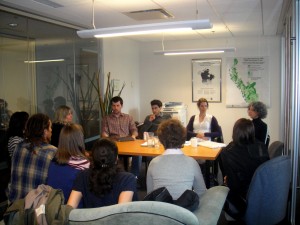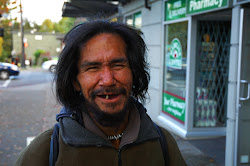INQUIRY Learning Opportunities
The Mackenzie Valley Pipeline Inquiry, also known as the Berger Inquiry, involved over two years of community testimony and legal hearings that addressed the social, environmental, and economic impacts of a proposed gas pipeline in the Yukon and Northwest Territories. Representatives from Aboriginal communities, lawyers, business people, workers, and other constituency groups voiced their various concerns, objections, and support for the project. The INQUIRY exhibit includes Inquiry transcripts, stories, and photographs.
Students, staff, and faculty can engage with the exhibit in a number of ways:
- Workshops: Curator and former journalist Drew Ann Wake will offer tailored workshops with courses from across campus to review the collected evidence and engage in role play from various Inquiry perspectives. Ms. Wake, with co-organizer Amy Perrault, has also invited several key individuals from the Inquiry to meet with students. Ms. Wake is consulting with faculty to design sessions that draw on course objectives and bridge in key concepts the project highlights.
- Plenary session: On the morning of November 13th, Glen Coulthard, Julie Cruikshank, and Alestine Andre INSERT POSITIONS/CONNECTIONS TO BERGER INQUIRY HERE will speak about the political, social, educational, and historical dimensions of the Berger Inquiry and its legacies. INSERT LOCATION/TIME DETAILS HERE
- CTLT Workshop: The Centre for Teaching, Learning, and Technology is hosting a guided workshop and facilitated conversation around the exhibit’s themes and teaching/learning potential. Faculty and TAs are especially encouraged to attend. (For more details and to register, click here.)
- Student Research Collective: An interdisciplinary student research collective is developing around themes highlighted in the exhibit and relevant to a number of contemporary processes: Aboriginal community consultation, resource extraction, sustainable development, current pipeline projects, non-renewable energies.










